Moshe Wasserblat
SQuARE: Sequential Question Answering Reasoning Engine for Enhanced Chain-of-Thought in Large Language Models
Feb 13, 2025Abstract:In the rapidly evolving field of Natural Language Processing, Large Language Models (LLMs) are tasked with increasingly complex reasoning challenges. Traditional methods like chain-of-thought prompting have shown promise but often fall short in fully leveraging a model's reasoning capabilities. This paper introduces SQuARE (Sequential Question Answering Reasoning Engine), a novel prompting technique designed to improve reasoning through a self-interrogation paradigm. Building upon CoT frameworks, SQuARE prompts models to generate and resolve multiple auxiliary questions before tackling the main query, promoting a more thorough exploration of various aspects of a topic. Our expansive evaluations, conducted with Llama 3 and GPT-4o models across multiple question-answering datasets, demonstrate that SQuARE significantly surpasses traditional CoT prompts and existing rephrase-and-respond methods. By systematically decomposing queries, SQuARE advances LLM capabilities in reasoning tasks. The code is publicly available at https://github.com/IntelLabs/RAG-FiT/tree/square.
HELMET: How to Evaluate Long-Context Language Models Effectively and Thoroughly
Oct 03, 2024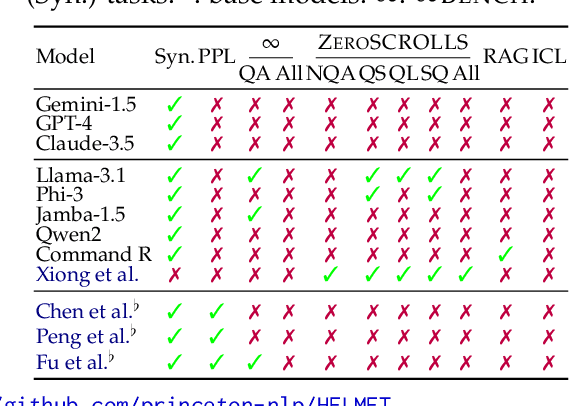



Abstract:There have been many benchmarks for evaluating long-context language models (LCLMs), but developers often rely on synthetic tasks like needle-in-a-haystack (NIAH) or arbitrary subsets of tasks. It remains unclear whether they translate to the diverse downstream applications of LCLMs, and the inconsistency further complicates model comparison. We investigate the underlying reasons behind current practices and find that existing benchmarks often provide noisy signals due to low coverage of applications, insufficient lengths, unreliable metrics, and incompatibility with base models. In this work, we present HELMET (How to Evaluate Long-context Models Effectively and Thoroughly), a comprehensive benchmark encompassing seven diverse, application-centric categories. We also address many issues in previous benchmarks by adding controllable lengths up to 128k tokens, model-based evaluation for reliable metrics, and few-shot prompting for robustly evaluating base models. Consequently, we demonstrate that HELMET offers more reliable and consistent rankings of frontier LCLMs. Through a comprehensive study of 51 LCLMs, we find that (1) synthetic tasks like NIAH are not good predictors of downstream performance; (2) the diverse categories in HELMET exhibit distinct trends and low correlation with each other; and (3) while most LCLMs achieve perfect NIAH scores, open-source models significantly lag behind closed ones when the task requires full-context reasoning or following complex instructions -- the gap widens with increased lengths. Finally, we recommend using our RAG tasks for fast model development, as they are easy to run and more predictive of other downstream performance; ultimately, we advocate for a holistic evaluation across diverse tasks.
RAG Foundry: A Framework for Enhancing LLMs for Retrieval Augmented Generation
Aug 05, 2024

Abstract:Implementing Retrieval-Augmented Generation (RAG) systems is inherently complex, requiring deep understanding of data, use cases, and intricate design decisions. Additionally, evaluating these systems presents significant challenges, necessitating assessment of both retrieval accuracy and generative quality through a multi-faceted approach. We introduce RAG Foundry, an open-source framework for augmenting large language models for RAG use cases. RAG Foundry integrates data creation, training, inference and evaluation into a single workflow, facilitating the creation of data-augmented datasets for training and evaluating large language models in RAG settings. This integration enables rapid prototyping and experimentation with various RAG techniques, allowing users to easily generate datasets and train RAG models using internal or specialized knowledge sources. We demonstrate the framework effectiveness by augmenting and fine-tuning Llama-3 and Phi-3 models with diverse RAG configurations, showcasing consistent improvements across three knowledge-intensive datasets. Code is released as open-source in https://github.com/IntelLabs/RAGFoundry.
Distributed Speculative Inference of Large Language Models
May 23, 2024Abstract:Accelerating the inference of large language models (LLMs) is an important challenge in artificial intelligence. This paper introduces distributed speculative inference (DSI), a novel distributed inference algorithm that is provably faster than speculative inference (SI) [leviathan2023fast, chen2023accelerating, miao2023specinfer] and traditional autoregressive inference (non-SI). Like other SI algorithms, DSI works on frozen LLMs, requiring no training or architectural modifications, and it preserves the target distribution. Prior studies on SI have demonstrated empirical speedups (compared to non-SI) but require a fast and accurate drafter LLM. In practice, off-the-shelf LLMs often do not have matching drafters that are sufficiently fast and accurate. We show a gap: SI gets slower than non-SI when using slower or less accurate drafters. We close this gap by proving that DSI is faster than both SI and non-SI given any drafters. By orchestrating multiple instances of the target and drafters, DSI is not only faster than SI but also supports LLMs that cannot be accelerated with SI. Our simulations show speedups of off-the-shelf LLMs in realistic settings: DSI is 1.29-1.92x faster than SI.
Accelerating Speculative Decoding using Dynamic Speculation Length
May 07, 2024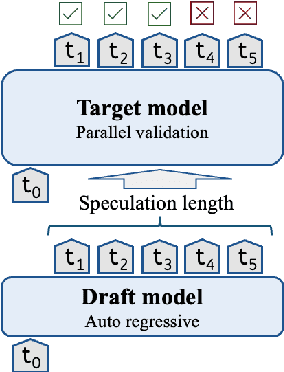


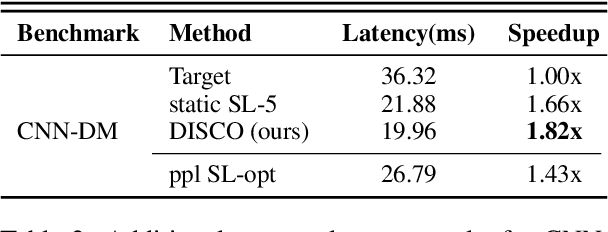
Abstract:Speculative decoding is a promising method for reducing the inference latency of large language models. The effectiveness of the method depends on the speculation length (SL) - the number of tokens generated by the draft model at each iteration. The vast majority of speculative decoding approaches use the same SL for all iterations. In this work, we show that this practice is suboptimal. We introduce DISCO, a DynamIc SpeCulation length Optimization method that uses a classifier to dynamically adjust the SL at each iteration, while provably preserving the decoding quality. Experiments with four benchmarks demonstrate average speedup gains of 10.3% relative to our best baselines.
CoTAR: Chain-of-Thought Attribution Reasoning with Multi-level Granularity
Apr 16, 2024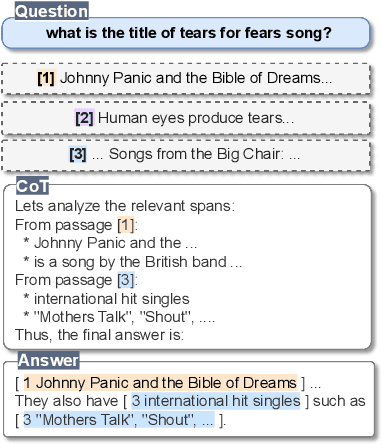
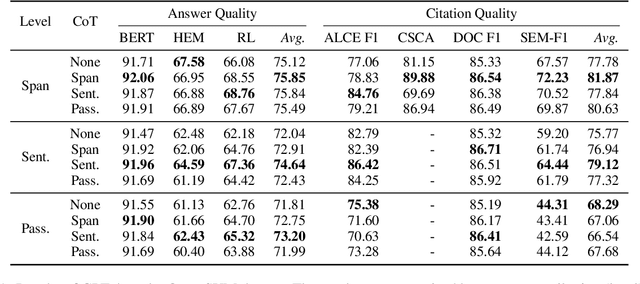
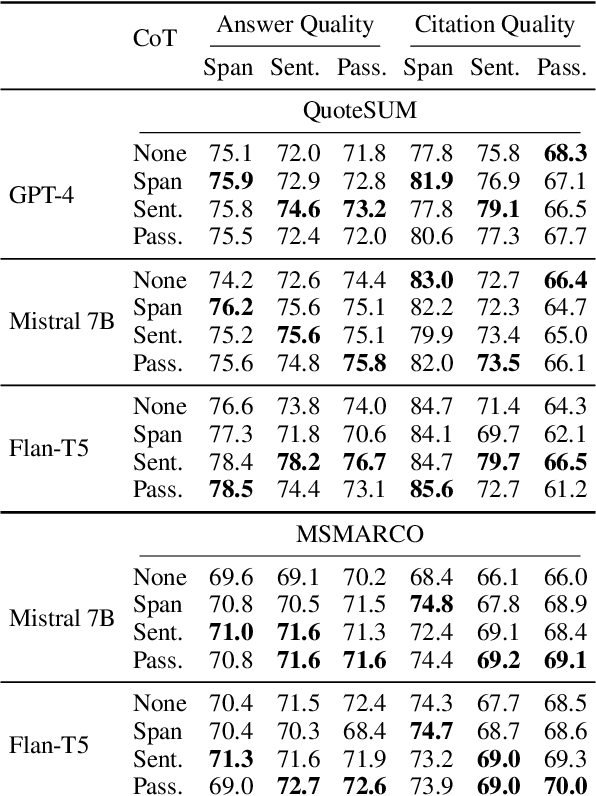
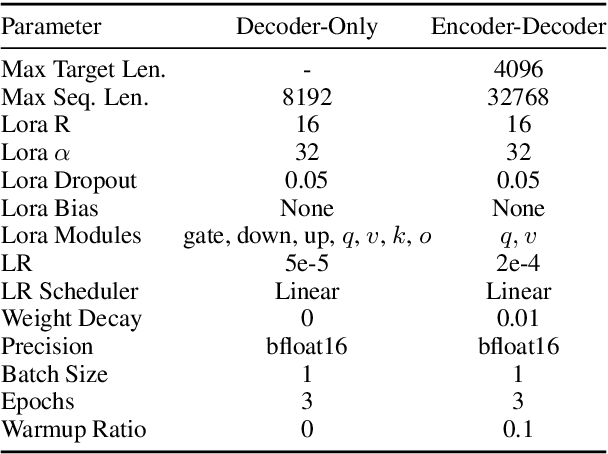
Abstract:State-of-the-art performance in QA tasks is currently achieved by systems employing Large Language Models (LLMs), however these models tend to hallucinate information in their responses. One approach focuses on enhancing the generation process by incorporating attribution from the given input to the output. However, the challenge of identifying appropriate attributions and verifying their accuracy against a source is a complex task that requires significant improvements in assessing such systems. We introduce an attribution-oriented Chain-of-Thought reasoning method to enhance the accuracy of attributions. This approach focuses the reasoning process on generating an attribution-centric output. Evaluations on two context-enhanced question-answering datasets using GPT-4 demonstrate improved accuracy and correctness of attributions. In addition, the combination of our method with finetuning enhances the response and attribution accuracy of two smaller LLMs, showing their potential to outperform GPT-4 in some cases.
Optimizing Retrieval-augmented Reader Models via Token Elimination
Oct 20, 2023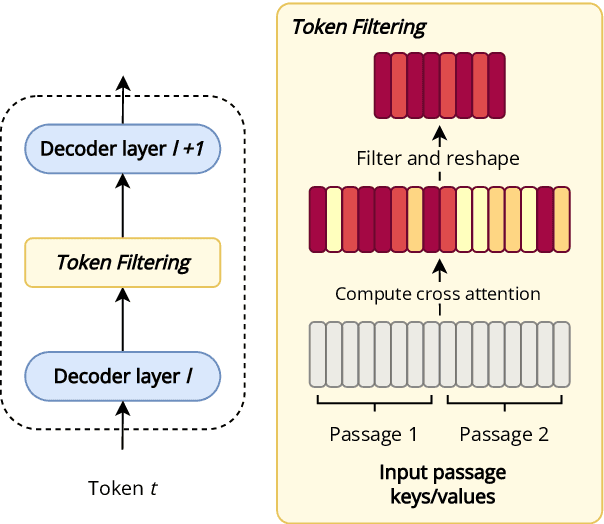
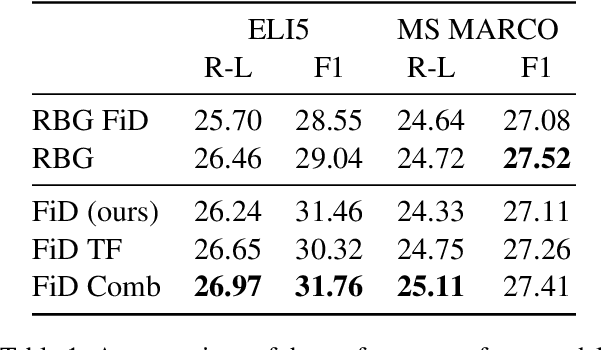
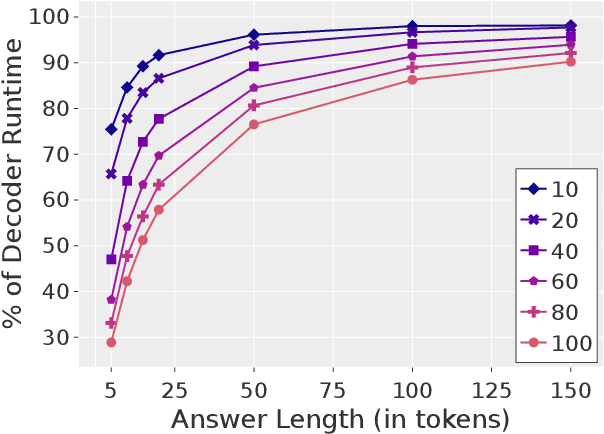
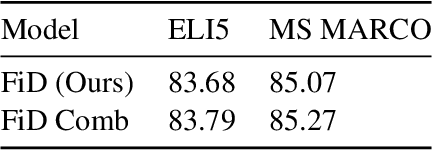
Abstract:Fusion-in-Decoder (FiD) is an effective retrieval-augmented language model applied across a variety of open-domain tasks, such as question answering, fact checking, etc. In FiD, supporting passages are first retrieved and then processed using a generative model (Reader), which can cause a significant bottleneck in decoding time, particularly with long outputs. In this work, we analyze the contribution and necessity of all the retrieved passages to the performance of reader models, and propose eliminating some of the retrieved information, at the token level, that might not contribute essential information to the answer generation process. We demonstrate that our method can reduce run-time by up to 62.2%, with only a 2% reduction in performance, and in some cases, even improve the performance results.
An Efficient Sparse Inference Software Accelerator for Transformer-based Language Models on CPUs
Jun 28, 2023Abstract:In recent years, Transformer-based language models have become the standard approach for natural language processing tasks. However, stringent throughput and latency requirements in industrial applications are limiting their adoption. To mitigate the gap, model compression techniques such as structured pruning are being used to improve inference efficiency. However, most existing neural network inference runtimes lack adequate support for structured sparsity. In this paper, we propose an efficient sparse deep learning inference software stack for Transformer-based language models where the weights are pruned with constant block size. Our sparse software accelerator leverages Intel Deep Learning Boost to maximize the performance of sparse matrix - dense matrix multiplication (commonly abbreviated as SpMM) on CPUs. Our SpMM kernel outperforms the existing sparse libraries (oneMKL, TVM, and LIBXSMM) by an order of magnitude on a wide range of GEMM shapes under 5 representative sparsity ratios (70%, 75%, 80%, 85%, 90%). Moreover, our SpMM kernel shows up to 5x speedup over dense GEMM kernel of oneDNN, a well-optimized dense library widely used in industry. We apply our sparse accelerator on widely-used Transformer-based language models including Bert-Mini, DistilBERT, Bert-Base, and BERT-Large. Our sparse inference software shows up to 1.5x speedup over Neural Magic's Deepsparse under same configurations on Xeon on Amazon Web Services under proxy production latency constraints. We also compare our solution with two framework-based inference solutions, ONNX Runtime and PyTorch, and demonstrate up to 37x speedup over ONNX Runtime and 345x over PyTorch on Xeon under the latency constraints. All the source code is publicly available on Github: https://github.com/intel/intel-extension-for-transformers.
QuaLA-MiniLM: a Quantized Length Adaptive MiniLM
Oct 31, 2022


Abstract:Limited computational budgets often prevent transformers from being used in production and from having their high accuracy utilized. A knowledge distillation approach addresses the computational efficiency by self-distilling BERT into a smaller transformer representation having fewer layers and smaller internal embedding. However, the performance of these models drops as we reduce the number of layers, notably in advanced NLP tasks such as span question answering. In addition, a separate model must be trained for each inference scenario with its distinct computational budget. Dynamic-TinyBERT tackles both limitations by partially implementing the Length Adaptive Transformer (LAT) technique onto TinyBERT, achieving x3 speedup over BERT-base with minimal accuracy loss. In this work, we expand the Dynamic-TinyBERT approach to generate a much more highly efficient model. We use MiniLM distillation jointly with the LAT method, and we further enhance the efficiency by applying low-bit quantization. Our quantized length-adaptive MiniLM model (QuaLA-MiniLM) is trained only once, dynamically fits any inference scenario, and achieves an accuracy-efficiency trade-off superior to any other efficient approaches per any computational budget on the SQuAD1.1 dataset (up to x8.8 speedup with <1% accuracy loss). The code to reproduce this work will be publicly released on Github soon.
Fast DistilBERT on CPUs
Oct 27, 2022Abstract:Transformer-based language models have become the standard approach to solving natural language processing tasks. However, industry adoption usually requires the maximum throughput to comply with certain latency constraints that prevents Transformer models from being used in production. To address this gap, model compression techniques such as quantization and pruning may be used to improve inference efficiency. However, these compression techniques require specialized software to apply and deploy at scale. In this work, we propose a new pipeline for creating and running Fast Transformer models on CPUs, utilizing hardware-aware pruning, knowledge distillation, quantization, and our own Transformer inference runtime engine with optimized kernels for sparse and quantized operators. We demonstrate the efficiency of our pipeline by creating a Fast DistilBERT model showing minimal accuracy loss on the question-answering SQuADv1.1 benchmark, and throughput results under typical production constraints and environments. Our results outperform existing state-of-the-art Neural Magic's DeepSparse runtime performance by up to 50% and up to 4.1x performance speedup over ONNX Runtime.
 Add to Chrome
Add to Chrome Add to Firefox
Add to Firefox Add to Edge
Add to Edge